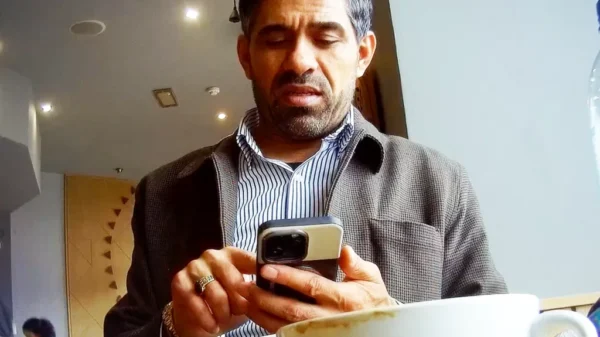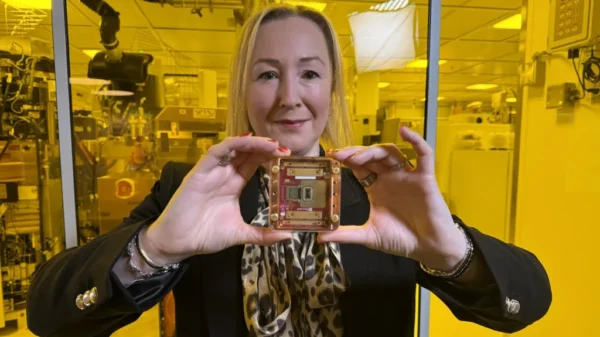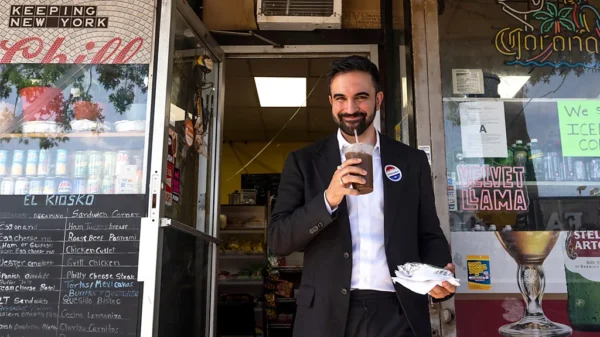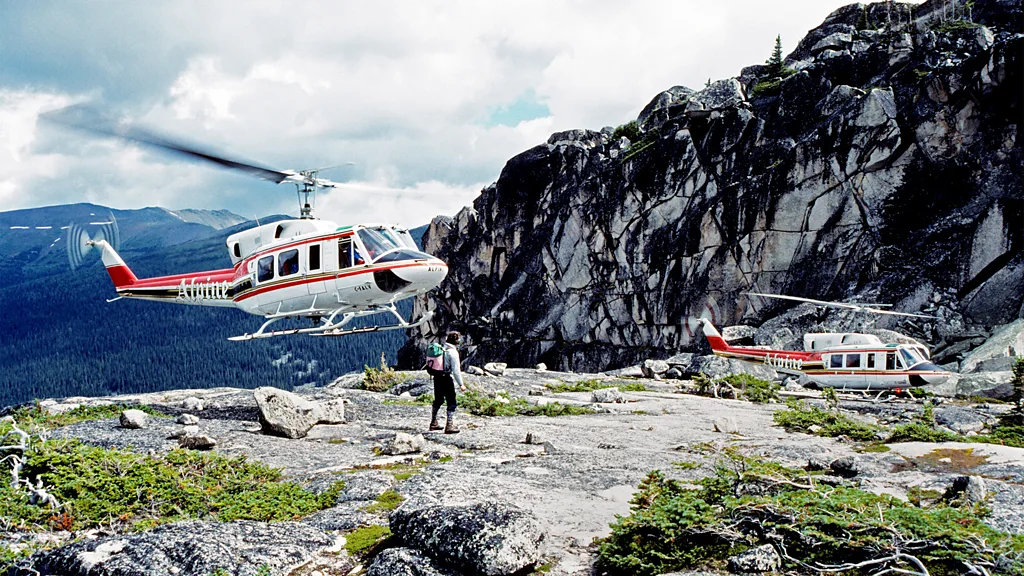In the remote valleys of British Columbia’s Purcell Mountains, hiking comes with a shot of adrenaline.
The first thing I heard was a disconcerting huffing and puffing in the bushes followed by the crescendo of something large and heavy running through the undergrowth in our direction.
“Get back!” my guide, Jason Loree, yelled, drawing the bear spray from his holster like a sharpshooter in a Hollywood movie.
A bear’s head appeared out of the foliage, took one look at us and promptly turned on its heel and ran. Crisis averted.
“Grizzly,” said Loree, slipping the bear spray back into his rucksack. “Fortunately, no cubs.”
I let out a sigh of relief, my panic subsiding as quickly as it had arisen.
Hiking is generally seen as a relatively tame pursuit, but in the remote valleys of British Columbia’s Purcell Mountains it comes loaded with the thrills and spills of an adrenaline sport.
The first adventure had been getting there. I was staying at Purcell Mountain Lodge, an off-grid retreat located around 25 crow-flying kilometres west of Golden, a diminutive mountain town known for its skiing, whitewater rafting and mountain biking culture. Due to the rugged, precipitous terrain, the only way in is by helicopter, a 15-minute flight that swoops low over narrow mountain ridges and steep-sided valleys before precision landing on a gravel helipad the size of a small putting green.

Heli-hiking was “invented” in Western Canada in the 1970s, a summer off-shoot of heli-skiing that had been pioneered a decade earlier by Austrian Canadian mountaineer Hans Gmoser. Teaming up with Canadian geologist Art Patterson, Gmoser formed Canadian Mountain Holidays (CMH) and led the first heli-skiing adventures in British Columbia’s Bugaboo Mountains, part of the Purcell Range, in 1965. It opened remote alpine areas to non-mountaineers, using helicopters to drop travellers into the wild, otherwise inaccessible terrain. The idea took off. Gmoser and his team built backcountry lodges and trained guides, and by 1978, summer heli-hiking trips were drawing travellers eager to walk through pristine alpine wilderness without the weeks of hard climbing.
In the years since, heli-hiking has evolved from a little-understood niche activity to a well-curated adventure package with options to partake in alpine trail-running or fixed protection climbing on via ferratas using cables and ladders. Thanks to Gmoser’s vision, there are now more than 30 lodges offering heli-hiking in British Columbia, from the Bugaboos to the Great Bear Rainforest.
I’d booked my four-day heli-hiking trip at Purcell Mountain Lodge a few weeks earlier without really knowing what to expect. Instructed to bring a sleeping bag, a towel and a 30-litre rucksack, I packed light, caught a bus to Golden and swotted up on bear safety.
I’d had a good view of the lodge and its surroundings as we descended in the helicopter; an attractive wooden structure with a gabled roof and wraparound balconies that wouldn’t have looked out of place in Switzerland. It was perched on the edge of a glorious alpine meadow with the imposing ramparts of the Selkirk Mountains glowering to the west.

The stakes were laid out in the morning when Loree asked me over breakfast if I was up for a bit of bushwhacking. Casually, he gestured out of the window at a distant unnamed mountain that he’d climbed several months previously on an undefined route. He wanted to reacquaint himself with the terrain, he said. I could be his guinea pig.
It was late September, the wildflowers were over and the alpine meadows had turned a beautiful shade of gold. Setting out from the lodge, we walked through an idyllic montane landscape punctuated with red huckleberry bushes and the shaggy seed-heads of western anemones. Clumps of subalpine firs dotted the mountain slopes and the majestic quartzite peaks and glaciers of the Selkirks watched over us like rocky sentinels.
While I consider myself an experienced hiker, I was appreciative to find myself in expert company: Loree is a certified Association of Canada Mountain Guide (ACMG). As we diverted off the trail, edging our way down a steep scree slope and through a tangle of foliage, I was glad his training had been so comprehensive. “The full hiking guide exam includes a four-day backpack trip,” he told me. “The backpack is mainly off trail where each candidate completes a proposed route plan prior. Each day candidates are required to take a turn leading the group for a period.”

While the bushwhacking was tough, it gave me an intimate taste of the wilderness around me. For long periods, I felt like a 19th-Century fur trader delving into uncharted territory as we clambered through dense vegetation to our unnamed peak. Ecosystems came and went like sequential episodes of a wildlife documentary: forests, meadows, river valleys and alpine tundra, until, a couple of hours later, we were standing on the rocky summit.
With my adrenaline already pricked from the bear encounter, I was about to experience another thrill – ridge-top scrambling.
Our next objective, Loree informed me as we chomped down lunch, was a mountain called Copperstain. “It’s my favourite hike because the ridge has a little bit of spice, the summit has 360-degree views, and you can get onto the ridge from different directions and drainages each with their own unique terrain.”
The “spice” was a series of steep notches requiring multiple handholds and mild exposure. With the wind blasting and the terrain falling away abruptly on either side, it was an invigorating traverse as we scrambled over crags and loose scree clinging to rocks for support. As for the views, Loree was right. From the summit, I could see the lodge nestled in the mid-distance with the intimidating east face of 3,284m (10,774ft) Mount Sir Donald in Glacier National Park rising behind it.
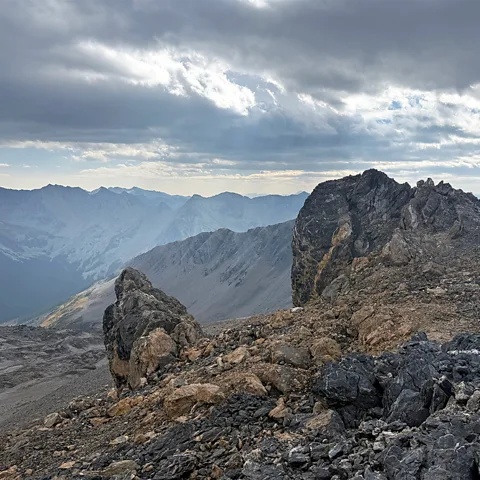
Back at our accommodation that evening, I was happy to rest my legs and make the most of the sauna, hot showers and abundant food. The Purcell Mountain Lodge, which was built in 1989, is dedicated to sustainability.
“We run mainly on our eco-conscious micro-hydro system and treat all sewage on-site,” said Jackie Mah, the general and operations manager. “After Covid-19, we simplified operations with a ‘pack in, pack out’ approach: guests bring their own water bottles, reuse cups, and follow small reminders like limiting shower times and turning off lights. While we provide luxury amenities like hot water and flush toilets, guests and staff work as a team to minimise their ecological impact.”
The lodge is certainly no youth hostel. While the bedrooms are relatively simple and the toilets and showers shared, the communal areas are spacious and comfortable, and the food is positively gourmet. Cooked breakfasts, packed lunches and three-course dinners were the norm during my stay.
Meanwhile, the terrain outside remains deliciously tranquil. In four days of roaming the mountains I saw only one other hiking group and no helicopters, save for the one that came to take me back to Golden. At busier times of year, the whirl of rotor-blades is more common. Some groups utilise the helicopters to drop them off in even more isolated locations before walking or skiing back to the lodge, with the landings, known as “heli-bumps”, designed to circumnavigate long or tricky sections of the route. They’re particularly popular with winter skiers.
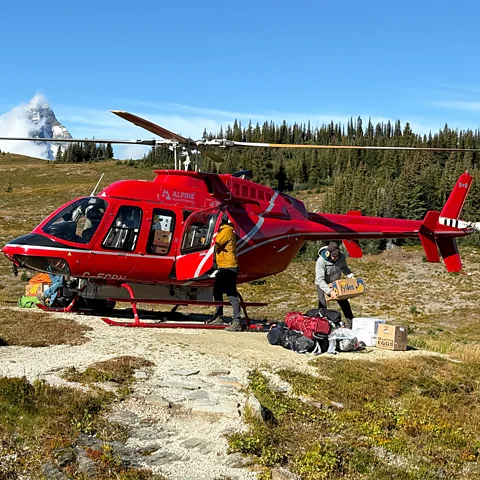
While it was hard to picture snow in the late-summer bliss, heli-skiing remains a big part of the business, according to Mah: “Summer was originally our busier season, but now it’s roughly 55% summer and 45% winter. Ski touring continues to grow in popularity, and our guests enjoy the remote untouched powder and less crowds.”
Qualified ACMG guides play a big part in all the heli-adventures. At the lodge, they mingle with guests at mealtimes and throughout the day. Hikers are split into groups based on ability discerned during a first day warm-up hike (as an advanced hiker, I got Loree to myself). If you decide to go off on your own, as I did a couple of times for afternoon runs, they give you a two-way radio and bear spray, just in case.
“Grizzly bears have been seen several times around the lodge either digging for ground squirrels or bathing in the creek,” Loree informed me as I prepared to sally forth alone one day. Fortunately, the only animals I spotted were squirrels.
I covered more than 60km (37 miles) in my four days in the Purcell Mountains both off trail and on, rode in two helicopters, scrambled across a plethora of high ridges and – thanks to Loree’s guiding prowess – learned how to tell the difference between a mountain hemlock and an Engelmann spruce.
For me, it was the highlight in a summer full of mountain adventures, but one of the beauties of heli-hiking is that it allows people with limited backcountry ability to enjoy the solitude of high-altitude locations that might otherwise be inaccessible to them.
“We adapt to all types of guests,” explained Mah, “From kids and families to advanced adventurers. The formula is simple: enjoy nature, share meals, engage in conversation and be active. Guests form lasting friendships, and every trip unfolds like magic.”
Sourse: BBC


